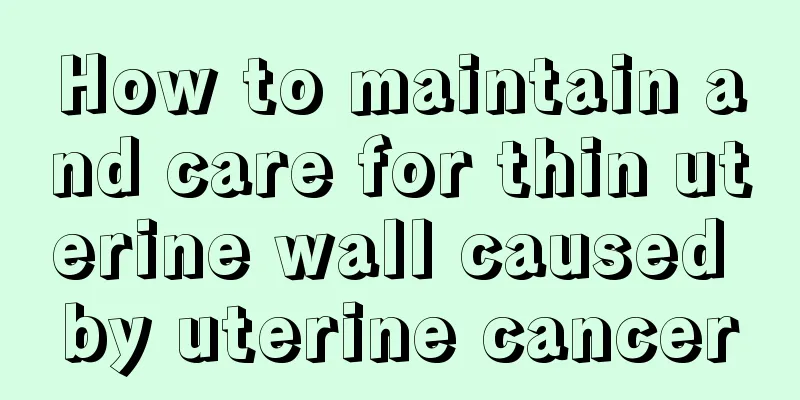How to care for teratoma

|
Teratoma sounds like a scary name, but in fact it is a common tumor disease. It often occurs in women and is generally treated with surgery. Home care before and after teratoma surgery is also very important. Let's take a look at how to care for teratoma. The importance and precautions of a proper diet before and after surgery: 1. Eat a semi-liquid diet one day before the operation and do not eat or drink on the morning of the operation to prevent accidental inhalation of anesthesia. 2. Do not eat for 6 hours after the operation, and then eat liquid food, avoid sugar and milk. After the gas is discharged, gradually change from semi-liquid food to normal meals. 3. Purpose and necessity of preoperative preparation: Skin preparation is to clean the skin and prevent infection of the incision. The purpose of preoperative medication is to ensure sleep, induce anesthesia, enhance the anesthesia effect, and reduce glandular secretion. Gastrointestinal preparation prevents aspiration of vomitus during and after surgery, prevents accidental injury to the intestine during surgery, facilitates smooth surgery, and prevents abdominal distension after surgery. 4. Placement of a urinary catheter facilitates surgery and prevents accidental injury to the bladder. 5. Preoperative blood preparation and drug allergy test to prepare for intraoperative and postoperative blood transfusion and medication 6. After the operation, you may feel general discomfort, dizziness, and incision pain, which are normal phenomena. Use painkillers if necessary. You may also experience nausea and vomiting, which are mostly caused by anesthetics and surgical stimulation. 7. Teach patients techniques for turning over after surgery, methods for reducing abdominal tension, techniques for preventing incision pain when coughing, techniques for getting out of bed, and how to use a toilet in bed, etc. 8. After the operation, lie flat without a pillow and tilt your head to one side to prevent headaches, prevent suffocation due to accidental inhalation of vomitus, and prevent shock. 9. Removing the urinary catheter and urinating early are beneficial to the recovery of bladder function and the prevention of urinary retention; avoiding urination difficulties due to overfilling of the bladder 10. Discharge Instructions: (1) Rest for 1 month after hysterectomy and refrain from sexual intercourse for 2-3 months. Avoid fatigue. After myomectomy, refrain from bathing in the tub and sexual intercourse for 1 month. (2) 7-14 days after total hysterectomy, there will be a small amount of pink secretions in the vagina. This is caused by the dissolution of the intestinal stump of the vagina. This is a normal phenomenon and does not require treatment. Just rest properly. If the secretions are bloody and the amount is like menstrual period, you should seek medical attention immediately. (3) You can take a shower one week after the stitches are removed, and wash your wound with warm water on a daily basis to prevent colds. |
<<: What are the advances in teratoma care
>>: Common home care for patients with teratoma
Recommend
Can eye drops be used long term?
Some people often experience dry eyes because the...
How effective is laser acne removal and acne scar removal
With the continuous development of industrializat...
How to dry wolfberries
Wolfberry is a plant that is familiar to everyone...
What is the cause of otitis media?
There are many causes of otitis media. In additio...
Acute icteric hepatitis
There are already many patients with acute hepati...
Insulin and obesity
Insulin is a relatively common drug and is also a...
The function of mouthwash
Nowadays, many people use mouthwash in their dail...
6 fleeting signs of a serious illness
First, numbness and tingling in the arms and legs...
What are the causes of bone cancer
What are the causes of bone cancer? No one wants ...
4 bad habits can easily induce eye stones
Many people would not have thought that eye stone...
Can laser remove dark circles?
Dark circles are a common skin problem. Once such...
How to tie a bow belt
No matter which season the clothes are, many clot...
There are bumps on my chest
Skin problems are one of the most common diseases...
How to correctly judge the onset of liver cancer? What tumor markers are checked for liver cancer?
Liver cancer is a common malignant tumor of the d...
How long does it take for the swelling of a prosthetic rhinoplasty to subside? How many days does it take for the swelling of a prosthetic rhinoplasty to subside?
More and more people are pursuing good looks, but...









